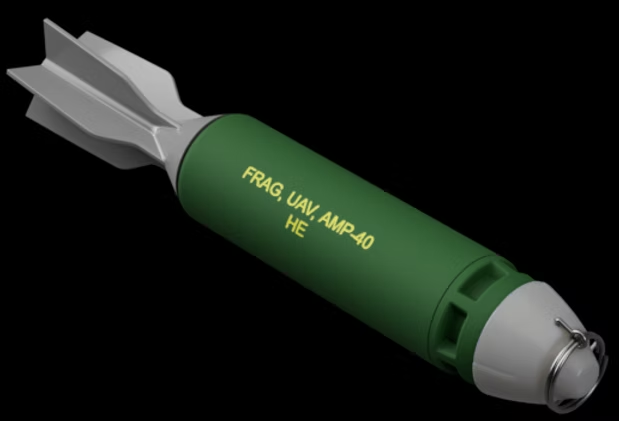Limitless Aero partners with ARES for Indo-Pacific UAV reach
Limitless Aeronautics, the US-based developer of small uncrewed aerial vehicles (UAV) systems and attachments has partnered with Ares, a new Australian company set up to manufacture small arms ammunition and UAV munitions, according to a 7th December company announcement.
Alex Gardner, CEO and chief engineer of Limitless, and Jason Murray, ARES CEO, took the time to tell Calibre more about the partnership over email. “ARES and Limitless have a close collaborative partnership, meaning both brands seek growth opportunities for each other. In the immediate term the ARES team are the boots on the ground in the Indo-Pacific for Limitless, and as the guided weapons and explosive ordnance capability is realised we will be the Limitless regional manufacturing partner,” Murray explained.
Limitless is designing attachments for UAV that can be used to turn an unarmed drone into a payload carrying weapon system, or enable different uses from a single payload attachment. “There are numerous different release systems that all use different methods, vary in quality, and there is generally no standard. Our platforms are derived directly from proven and used military systems on aircraft, and now are scaled down and made into commercial like products, meaning you can ensure rugged and multi-mission use from off the shelf drones,” Gardner said, shedding light on the Limitless products.
This includes the X2T payload attachment that weighs just over 120g, but can carry up to 18 kg of payload and be attached to any UAV from a model in the 7 inch class (which typically refers to the diameter of the propellers), up to Heavy Lift Group 2 drones, those with a maximum take-off weight (MTOW) between 9 kg and 25 kg using picatinny rails. For reference, one drone in this class is Ukraine’s Baba Yaga, with six propellers it can carry warheads up to 15 kg in weight and travel at speeds up to 82 km/h, although it is not clear whether that is with a 15 kg bomb. Baba Yaga has been used extensively in Ukraine and its ability to deploy munitions is one of the reasons that it has proven effective. The X2T, as well as smaller variants for UAS in the sub 7” class are currently undergoing testing and evaluation.
Purpose built for UAVs

This image shows the AMP-40 purpose-built munition for drones with low drag fins. Few munitions used by drones are purpose-built for them, which introduces weight penalties at the expense of lethality. Credit: Limitless Aero
Limitless has also designed and is testing the AMP-40, a 0.6 kg munition designed specifically for UAVs. “Our optimised drone munitions use a very simple and easy to manufacture approach to ensure rapid scalability,” Gardner said. The AMP-40 is a 40 mm round with stabilising fins that is 22 cm long – a 40 mm grenade, which is often amongst the payloads used from drones in Ukraine, is around 10 cm long as an all up round, including the propellant. However, users typically modify these grenades for aerial use by attaching stabilising fins to the tail end of the munition. The Limitless round is built specifically for UAVs, including its own stabiliser and a new fragmentation design and different designs available.
“This ensures that the U.S. and its allies can quickly scale the production of UAV warheads that are actually tailored for modern FPV and drone tactics, offering a homegrown, rapidly manufacturable design optimized for large-scale deployment,” Gardner said, pointing towards the likely growth in this type of weaponry.
This is a key growth area for UAV-delivered munitions, until the war in Ukraine, most munitions used by drone operators were repurposed from other weapons. A 40 mm grenade, in the example above, must withstand the force of being explosively fired from the barrel of a weapon at speeds well over 100 metres per second. Typically, this means thick walls designed to withstand firing forces. Now, if you think about the same design considerations for a mortar round – which has even more propellant packed behind it, or an RPG, it becomes clear that these munitions carry a lot of weight simply to withstand the stress of being fired, but a UAV doesn’t have those stresses, meaning that weight can be saved from making the munition resistant to stress, and poured into making it more lethal. This is the approach taken by the UK’s Overwatch Energetics at least, which builds the Pholos drone, and doubtless there are others pursuing the same route.
Limitless is also working on the final R&D stages of a drone called HIVE-2, a Group 1 UAV (those with an MTOW less than 2 kg) built from commercially available components to provide a drone that is easily scaled. HIVE-2 is a tube-launched UAV, designed to be used in swarms and provide ISR using thermal or optical cameras. It can operate “in truly denied environments,” according to Gardner.

The Hive 2 concept UAV is shown here, which is an EW hardened design. Credit: Limitless Aero.
“ARES Armaments was stood up early in 2024 to address the zero sovereign manufacturing capability in Australia for nonstandard ammunition natures for Law Enforcement and Defence clients. We also recognised the more complex and growing need for a sovereign manufacturing capability to address the gap in Shoulder/UAS fired munitions so immediately set about planning the build of a new facility in South Australia which will commence construction late 2025,” Murray added. As noted, it is not unusual for states to lack any specific capacity to build drone-fired munitions.
Calibre comment
The partnership between Limitless and ARES is in its opening phases and both are seeking additional funding in the near future. It’s a good time for defence companies seeking investment as venture capital firms have poured over $2.5 billion into defence tech companies in 2024, on top of another $2.6 billion in 2022 with companies like Anduril and Helsing leading the charge. Venture capital firms had tended to avoid defence for various reasons including ethical concerns, as well as the notorious difficulty of the sector as far as securing contracts is concerned – there can be only one type of customer for a defence company. However, as defence has embraced artificial intelligence and software, it has become easier for investment funds to invest and accept the potential challenges they might face in returning a profit on those funds.
By Sam Cranny-Evans, published on 28th December 2024.

Sign Up for Updates!
Get insider news, tips, and updates. No spam, just the good stuff!





